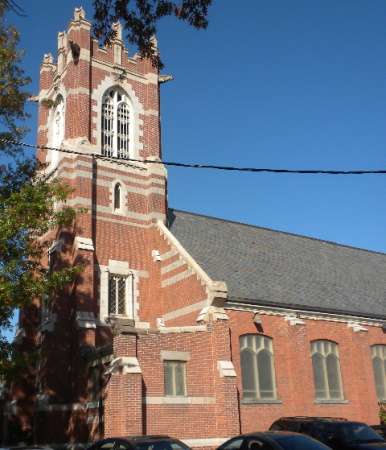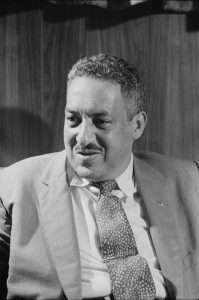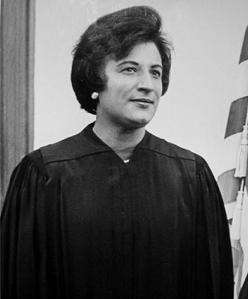Constance Baker Motley encountered overt racism for the first time when she left her home in New Haven to attend Fisk College in Nashville. She got off her southbound train in Cincinnati to stretch her legs, and railroad workers attached a rusty old car to the train. When she tried to return to her seat, the porter blocked her way. He pointed to a sign that read ‘Colored’ and directed her to the rusty old car.
Constance Baker Motley would, over the course of a long legal career, play an instrumental role in ending public discrimination in the South.
She began her battle against racism, though, before she even got to college. She stole the ‘Colored’ sign.
Constance Baker Motley
She was born Sept. 14, 1921, in New Haven, Conn., the ninth of 12 children. Her parents immigrated from Nevis, part of the British West Indies. Rachel Huggins, her mother, was a domestic worker. Her father, McCullough Alva Baker, worked as a chef for Yale student societies, including Skull and Bones.
Though poor, they belonged to New Haven’s black elite. The family regularly attended St. Luke’s Episcopal Church, founded in 1844 by free blacks, including the grandparents of W.E.B. Du Bois.

St. Luke’s Episcopal Church
Some people considered West Indians arrogant, and McCullough Baker proved their point. His maternal grandfather was white and all of his grandparents were free. He didn’t think of himself as a black American, wrote his daughter. Olive-skinned, he dressed and walked as if he were president of the First National Bank, she said.
New Haven
Race relations in New Haven were as good as anywhere in New England until after World War II, wrote Constance Baker Motley in her 1999 autobiography. Many abolitionists had taught at and attended Yale, and their descendants helped black children get an education.
She went to integrated public schools in New Haven. At her junior high school, Augusta Lewis Troup, a WPA mural depicted the Amistad mutiny. Her white teachers never taught them about Amistad, though it had been a major historical event in New Haven, she reflected in her book.
As a young girl, her family never discussed slavery, nor that her great-grandmothers had been enslaved.
Constance Baker Motley was a standout student in high school, where she read about black history and current politics. “I began consciously to identify with black America,” she wrote. And she decided to get involved in the civil rights movement – as a lawyer. Her mother wanted her to go into hairdressng.
Many Firsts
A local philanthropist helped pay her way through Fisk, a historically black college. She decided to transfer to NYU, which was integrated at the time. In 1946 she received her law degree from Columbia University Law School.
That same year she married a man very unlike her father, the gentle Joel Motley, Jr., a real-estate and insurance broker.

Thurgood Marshall in 1957
Constance Baker Motley then got a job as Supreme Court Associate Justice Thurgood Marshall’s law clerk. She wrote the original complaint in Brown V. Board of Education, a landmark case in which the Supreme Court ruled against school segregation.
As a civil rights attorney, she visited fire-bombed churches, participated in freedom marches and visited Rev. Martin Luther King in jail.

James Meredith in 1962.
Constance Baker Motley successfully represented James Meredith before the U.S. Supreme Court in his bid to enter the University of Mississippi. She argued nine more cases before the high court, and won eight of them.
She became the first black woman elected to the New York state Senate, then the first to serve as borough president of Manhattan. In addition, she was the first African-American woman appointed to the federal judiciary. In 1978, she ruled Major League Baseball must allow a female reporter into the players’ locker room.
One of her colleagues remembered her as unflappable. She once ran into an opposing attorney in an airport and extended her hand. He refused to shake it.
“Oh, you still don’t shake black people’s hands,” she said. “Very well then,” and sailed off
A Century of Struggle
Constance Baker Motley died of congestive heart failure on Sept. 28, 2005. She was buried at St. Luke’s Episcopal Church in New Haven.
Before her death, she reflected on the civil rights movement and concluded:
A century of struggle for equality for black Americans has paid off, in large measure.
Watch Constance Baker Motley talk about her childhood here.
This story was updated in 2022.

